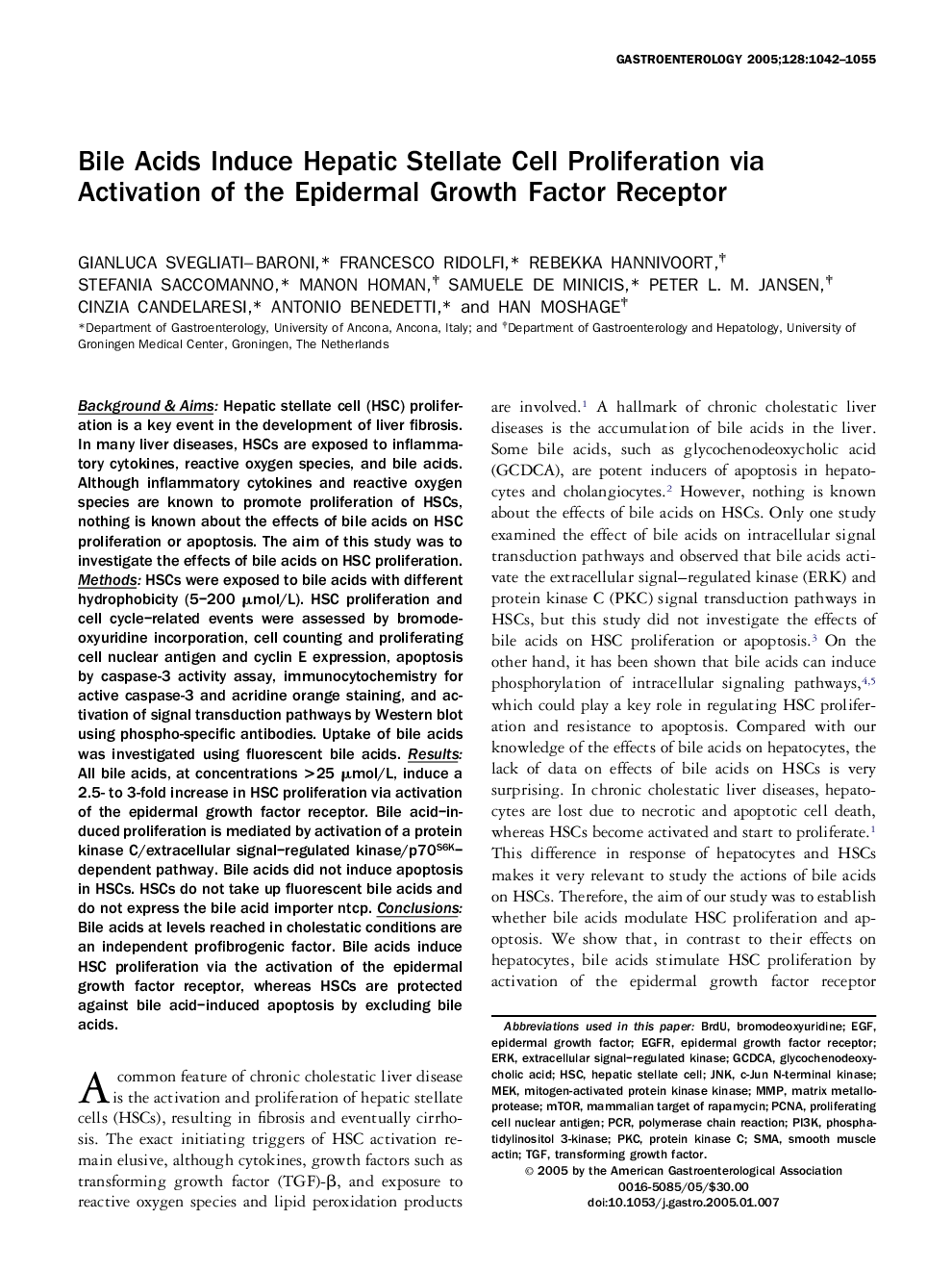| Article ID | Journal | Published Year | Pages | File Type |
|---|---|---|---|---|
| 9245502 | Gastroenterology | 2005 | 14 Pages |
Abstract
Background & Aims: Hepatic stellate cell (HSC) proliferation is a key event in the development of liver fibrosis. In many liver diseases, HSCs are exposed to inflammatory cytokines, reactive oxygen species, and bile acids. Although inflammatory cytokines and reactive oxygen species are known to promote proliferation of HSCs, nothing is known about the effects of bile acids on HSC proliferation or apoptosis. The aim of this study was to investigate the effects of bile acids on HSC proliferation. Methods: HSCs were exposed to bile acids with different hydrophobicity (5-200 μmol/L). HSC proliferation and cell cycle-related events were assessed by bromodeoxyuridine incorporation, cell counting and proliferating cell nuclear antigen and cyclin E expression, apoptosis by caspase-3 activity assay, immunocytochemistry for active caspase-3 and acridine orange staining, and activation of signal transduction pathways by Western blot using phospho-specific antibodies. Uptake of bile acids was investigated using fluorescent bile acids. Results: All bile acids, at concentrations >25 μmol/L, induce a 2.5- to 3-fold increase in HSC proliferation via activation of the epidermal growth factor receptor. Bile acid-induced proliferation is mediated by activation of a protein kinase C/extracellular signal-regulated kinase/p70S6K-dependent pathway. Bile acids did not induce apoptosis in HSCs. HSCs do not take up fluorescent bile acids and do not express the bile acid importer ntcp. Conclusions: Bile acids at levels reached in cholestatic conditions are an independent profibrogenic factor. Bile acids induce HSC proliferation via the activation of the epidermal growth factor receptor, whereas HSCs are protected against bile acid-induced apoptosis by excluding bile acids.
Keywords
ERKGCDCAPCNATGFPKCEGFRmTORJnkEGFPI3KMMPHSCc-Jun N-terminal kinaseProliferating Cell Nuclear Antigensmooth muscle actinGlycochenodeoxycholic acidBrdUbromodeoxyuridineSMAHepatic stellate cellepidermal growth factorPhosphatidylinositol 3-kinaseMatrix metalloproteaseMEKmammalian target of rapamycinpolymerase chain reactionPCRProtein kinase Cmitogen-activated protein kinase kinaseextracellular signal-regulated kinaseEpidermal growth factor receptor
Related Topics
Health Sciences
Medicine and Dentistry
Gastroenterology
Authors
Gianluca Svegliati-Baroni, Francesco Ridolfi, Rebekka Hannivoort, Stefania Saccomanno, Manon Homan, Samuele de Minicis, Peter L.M. Jansen, Cinzia Candelaresi, Antonio Benedetti, Han Moshage,
